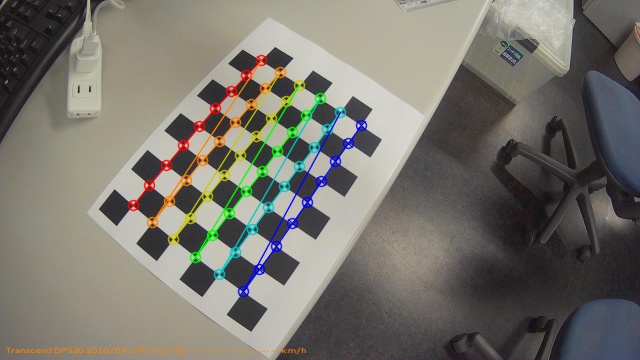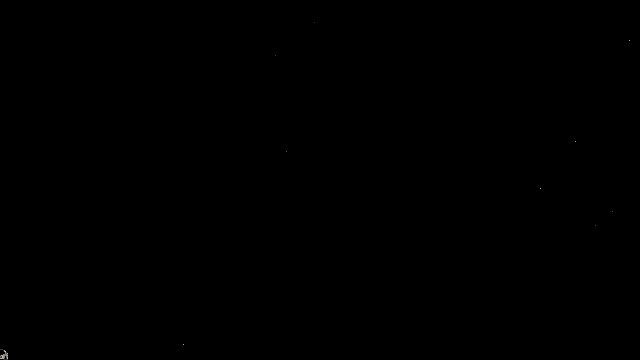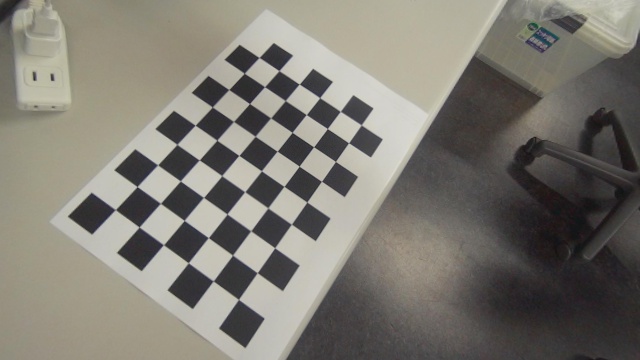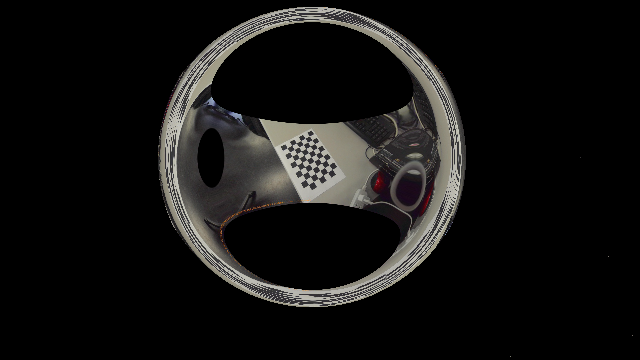Problem with getOptimalNewCameraMatrix
I want to calibrate a car video recorder and use it for 3D reconstruction with Structure from Motion (SfM). The original size of the pictures I have took with this camera is 1920x1080. Basically, I have been using the source code from the OpenCV tutorial for the calibration.
But there are some problems and I would really appreciate any help.
So, as usual (at least in the above source code), here is the pipeline:
- Find the chessboard corner with findChessboardCorners
- Get its subpixel value with cornerSubPix
- Draw it for visualisation with drawhessboardCorners
- Then, we calibrate the camera with a call to calibrateCamera
- Call the getOptimalNewCameraMatrix and the undistort function to undistort the image
In my case, since the image is too big (1920x1080), I have resized it to 640x320 and used it for the calibration (during SfM, I will also use this size of image, so, I don't think it would be any problem). And also, I have used a 9x6 chessboard corners for the calibration.
Here, the problem arose. After a call to the getOptimalNewCameraMatrix, the distortion come out totally wrong. Even the returned ROI is [0,0,0,0]. Below is the original image and its undistorted version:


You can see the image in the undistorted image is at the bottom left.
But, if I didn't call the getOptimalNewCameraMatrix and just straight undistort it, I got a quite good image.

So, I have two questions.
- Why is this? I have tried with another dataset taken with the same camera, and also with my iPhone 6 Plus, but the results are same as above.
- For SfM, I guess the call to getOptimalNewCameraMatrix is important? Because if not, the undistorted image would be zoomed and blurred, making the keypoint detection harder (in my case, I will be using the optical flow)? I have tested the code with the opencv sample pictures and the results are just fine.
Below is my source code:
from sys import argv
import numpy as np
import imutils # To use the imutils.resize function.
# Resizing while preserving the image's ratio.
# In this case, resizing 1920x1080 into 640x360.
import cv2
import glob
# termination criteria
criteria = (cv2.TERM_CRITERIA_EPS + cv2.TERM_CRITERIA_MAX_ITER, 30, 0.001)
# prepare object points, like (0,0,0), (1,0,0), (2,0,0) ....,(6,5,0)
objp = np.zeros((9*6,3), np.float32)
objp[:,:2] = np.mgrid[0:9,0:6].T.reshape(-1,2)
# Arrays to store object points and image points from all the images.
objpoints = [] # 3d point in real world space
imgpoints = [] # 2d points in image plane.
images = glob.glob(argv[1] + '*.jpg')
width = 640
for fname in images:
img = cv2.imread(fname)
if width:
img = imutils.resize(img, width=width)
gray = cv2.cvtColor(img,cv2.COLOR_BGR2GRAY)
# Find the chess board corners
ret, corners = cv2.findChessboardCorners(gray, (9,6),None)
# If found, add object points, image points (after refining them)
if ret == True:
objpoints.append(objp)
corners2 = cv2.cornerSubPix(gray,corners,(11,11),(-1,-1),criteria)
imgpoints.append ...


Can you show the section of code where you call the function? I just tested with the calibration I'm currently using, and it works fine. It's probably a parameter problem, and for that we need to see what you're doing.
Hmm, I don't see anything wrong. I will point out that you should only need to call getOptimalNewCameraMatrix once though. It should be the same for all the images since they have same distortion and camera matrix.
Yeah, I can take a look.
Google Drive, megaupload, an imgur gallery, whatever.
Ok, My C++ version works fine. I'm fixing a problem with Python right now, so I'll get back to you on that.
Hmm, your python code is running just fine on my machine. What version of OpenCV are you using?
I'm using Python3, but yeah. No problems at all. I just copied your code and added a few print statements. It doesn't look like there's been any changes to the code, so I don't know why you wouldn't get the same results.
It's definitely because the roi is all zeros, but why is it all zeros? Are you getting all zeros in the distortion matrix as well?
And I've got
Which makes me wonder what the difference is.
So I tried just overwriting the dist matrix with the one you have, and it works fine. Your distortion matrix seems correct, and it puts out good results from getOptimalNewCameraMatrix.
Yep. Not a clue. But when using your values from calibrateCamera, getOptimalNCM works just fine.
Ah, wait what? Why is part of my calibration.cpp commented out? That may have something to do with it.